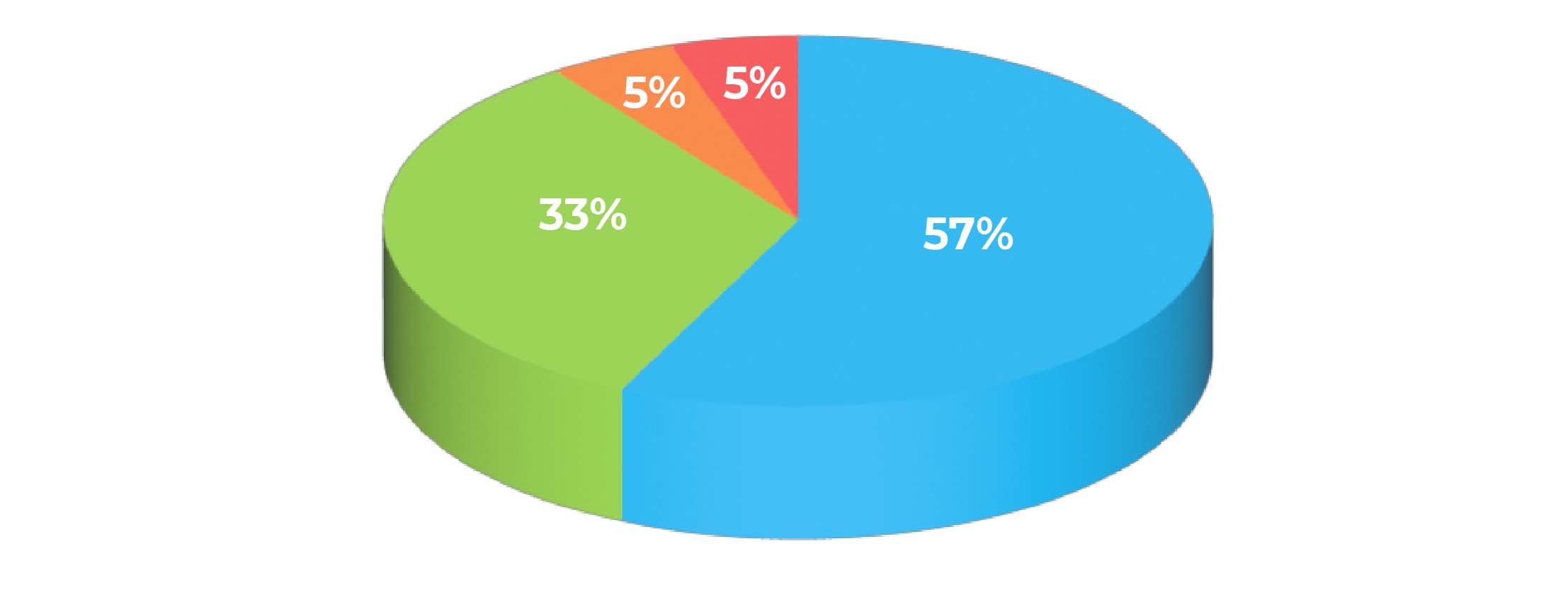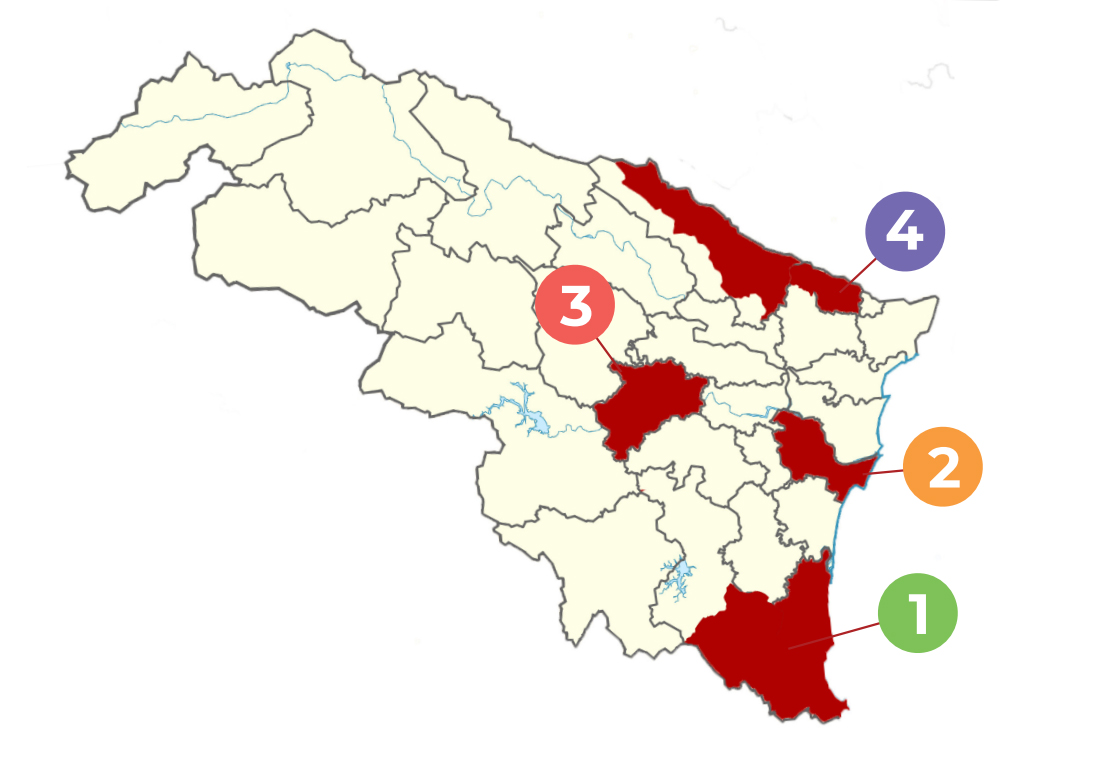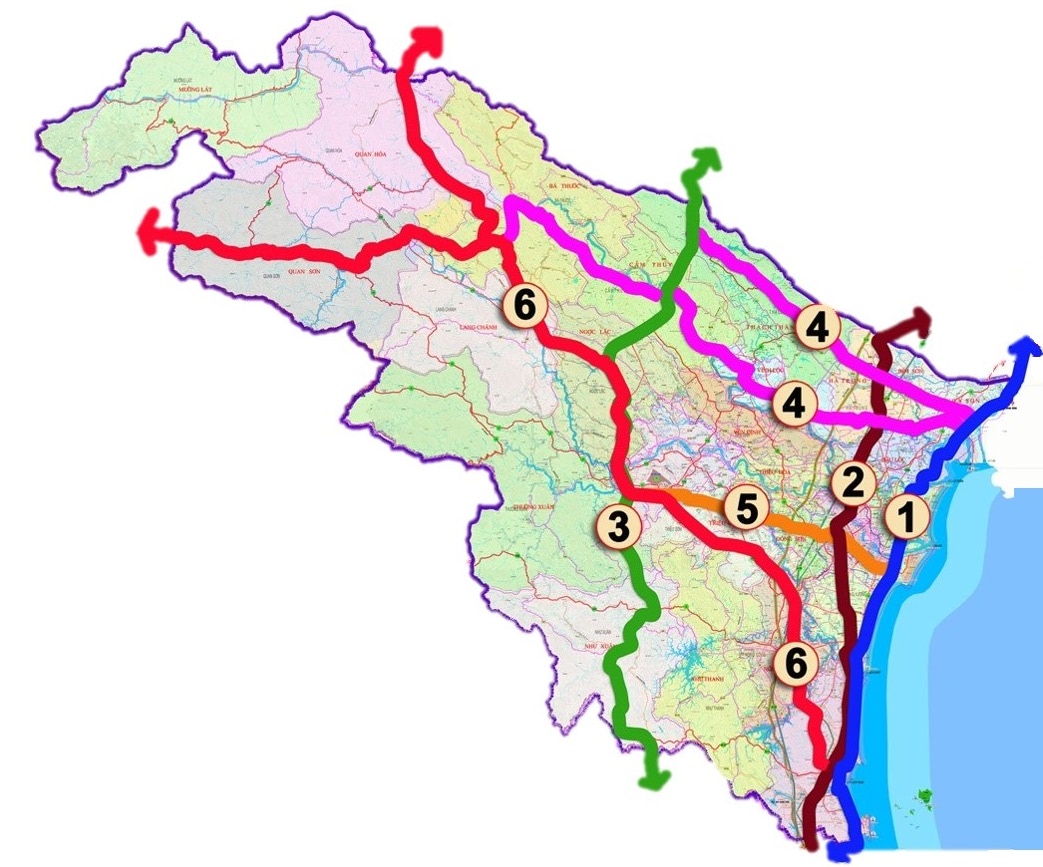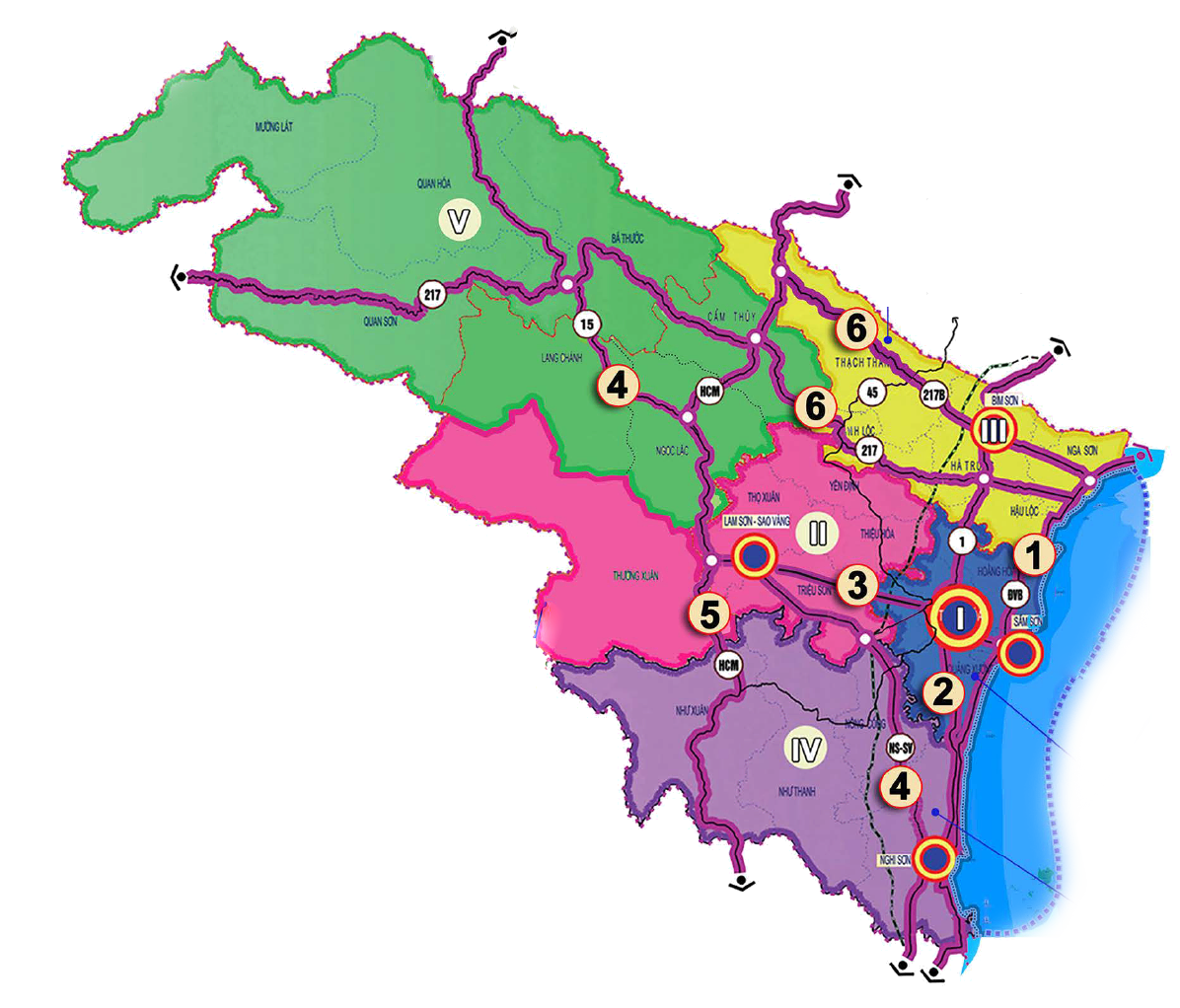

Thanh Hoa City - Sam Son City steering economic hub aims to develop multi-sector services focusing on developing clean and high-tech industries with high added value, high-quality human resources, beach tourism, and heritage travel, making Sam Son City one of the country's key tourist destinations.

Coastal economic corridor connecting Thanh Hoa province with the northern provinces (Quang Ninh, Hai Phong, Thai Binh, Nam Dinh, Ninh Binh) and Nghe An province (in the central region) through the coastal road and National Highway 10.
The North-South economic corridor is the central axis of the province in the North and South directions, connecting Thanh Hoa province with Ha Noi, Northern, and Northern Central provinces via National Road 1A and the North-South expressway.
The central economic corridor: It is the central East–West axis of the entire province, playing a key role in regulating the province’s economic, urban, and service activities. It connects the former Sam Son City – former Thanh Hoa City – former Tho Xuan District via Nam Song Ma Boulevard, Le Loi Boulevard, and the Nghi Son – Tho Xuan Road.
International economic corridorconnecting Nghi Son seaport and Tho Xuan airport with Northwestern provinces and Lao PDR via the route from Tho Xuan airport to Nghi Son Economic Zone, Ho Chi Minh Road, National Road 15, National Road 217 and Na Meo international border gate.
Ho Chi Minh road economic corridor (agricultural highway), connecting Thanh Hoa province with Ha Noi, the northern provinces, Nghe An province, and especially the midland and mountainous districts of the province.

1. Characteristics:: it is a driving-force zone in the center of Thanh Hoa Province, consisting of mutually supportive urban clusters, in which the former Thanh Hoa City – former Sam Son City form the core area, functioning as the integrated center and provincial administrative seat of Thanh Hoa.
2. Core development orientation Multi-sector, multi-field development; focusing on infrastructure and urban economic development, developing service and technical sectors with high added value, marine economy sectors, coastal tourism closely linked to ecological and cultural tourism, developing clean and environmentally friendly industries, and sustainable organic agriculture.
1. Characteristics: Area No. 2 is a central plain area combining the midland area of Thanh Hoa province and an important traffic hub by road and airway.
2. Core development orientation: developing clean and sustainable agriculture, high-tech industry, and tourism services. Lam Son-Sao Vang Industrial Park will be developed into a high-tech industrial park of the province, focusing on electronics and telecommunications equipment, aviation, information technology, high-tech agriculture, heritage travel, and community-based ecotourism.
1. Characteristics: Area No. 3 is a northern dynamic area of the province and a gateway connecting Thanh Hoa with Hanoi, the Red River Delta, and the Northeast region.
2. Core development orientation:: developing the construction materials industry, processing and manufacturing industry, textile and footwear industry, pharmaceutical chemistry, forestry and fishery, heritage travel and ecotourism, large-scale and high-tech agricultural production with the main products including fruit trees, industrial crops, cattle raising, and aquaculture.
1. Characteristics: Area No. 4 is a Southern steering hub associated with the Nghi Son Economic Zone and a necessary driving force to promote Thanh Hoa to become a regional and national economic center.
2. Core development orientation: developing the petrochemical, heavy, processing, and manufacturing industries in the Nghi Son economic zone, the marine, and urban economy, and services that meet the needs of the economic zone's development.
1. Characteristics: Area No. 5 is the western mountainous region of Thanh Hoa province. There is a border between Vietnam and Laos with eco-watershed forests, ensuring an ecological environment, water source, national defense, and security.
2. Core development orientation,
+ Preserving and using special-use forests, reserves, and nature reserves associated with ecotourism and heritage travel, manufacturing forestry and medicinal products, and developing animal and cattle farming.
+ Developing high-tech agriculture, afforestation of large timbers, agricultural and food processing industry, building materials industry, and textile industry in appropriate areas.
Implementation unit:
OFFICE OF THE THANH HOA PROVINCE PEOPLE'S COMMITTEE